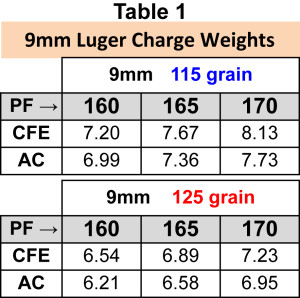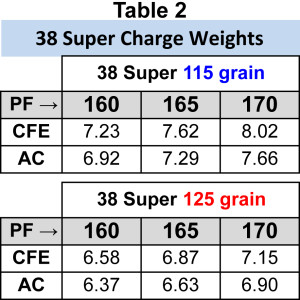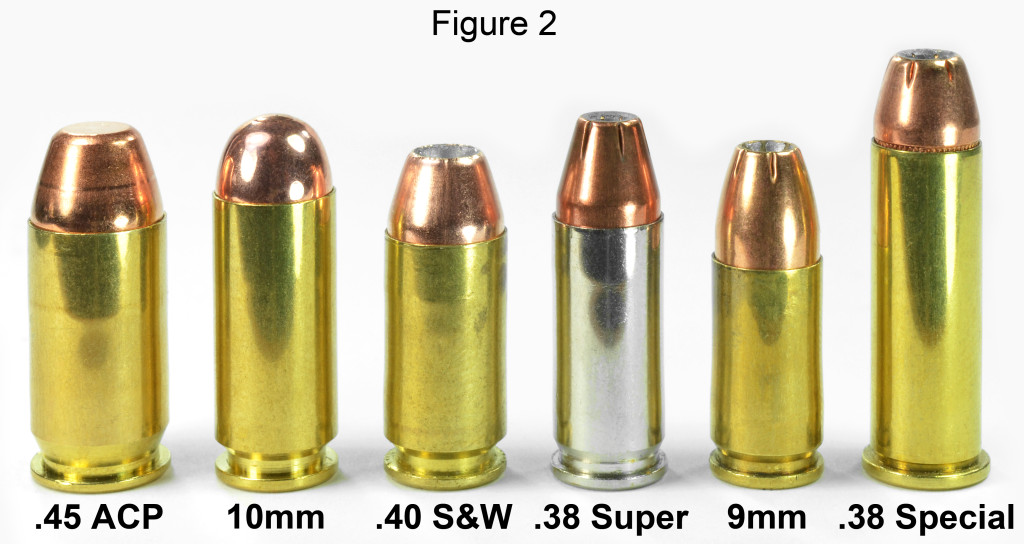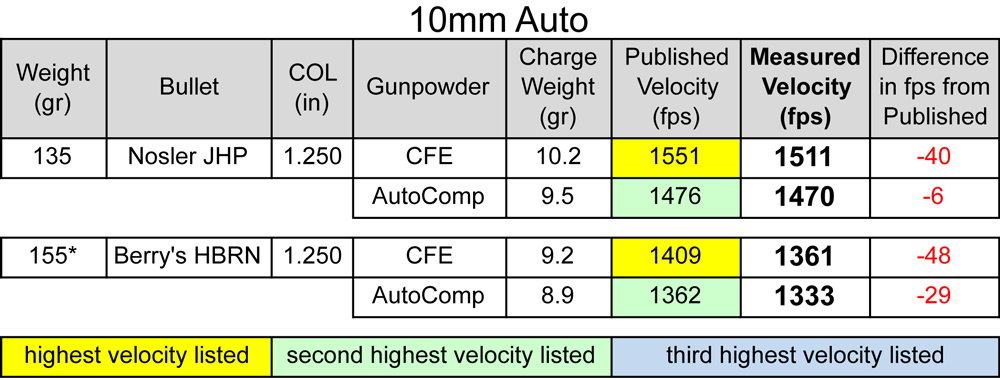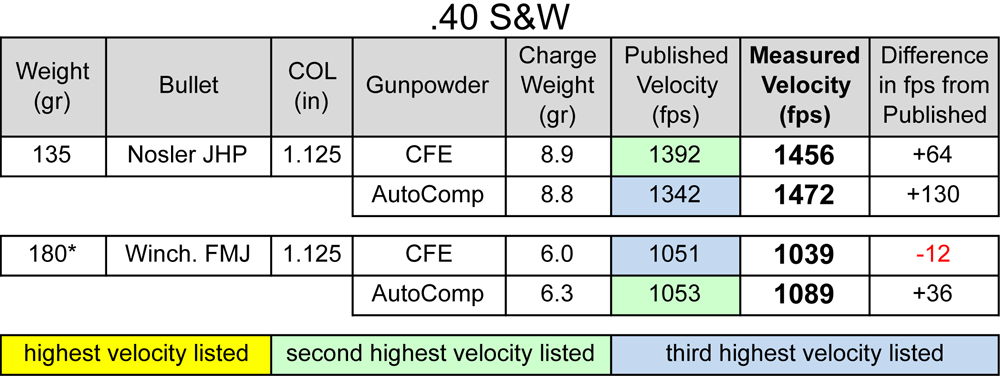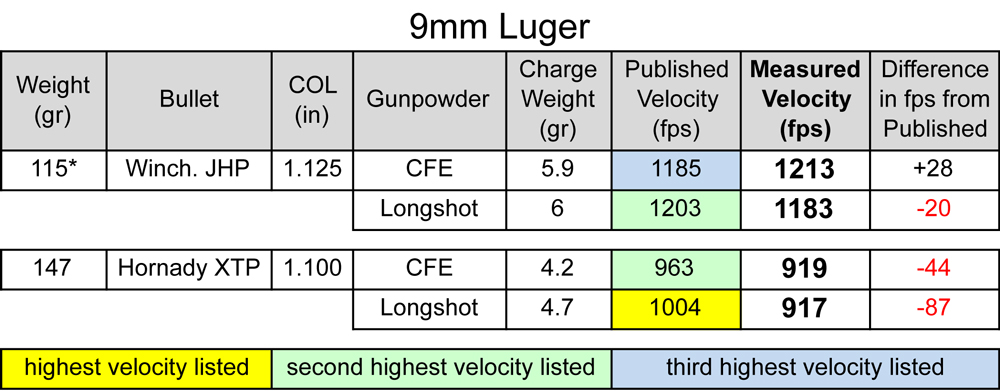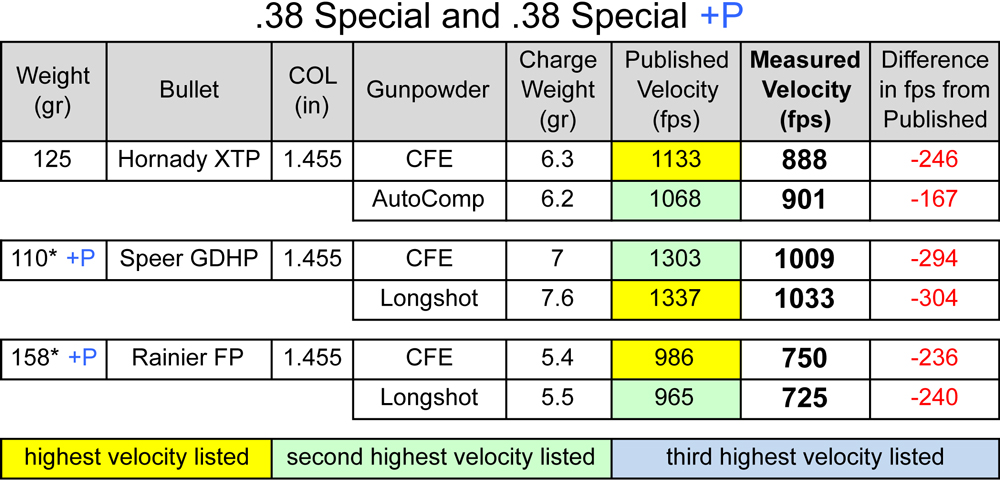Notes - from
http://www.handgunsmag.com/competition/making-major-hodgdon-cfe-pistol-powder/see Brad Miller's other articles at
http://www.shootingtimes.com/author/brmiller/
Power Factor & Recoil: Which Bullet Weight Gives You the Edge?
How to Measure Relative Handgun Recoil
Compensators: Pressure or Gas?
Reducing Recoil: Traditional vs. Bushing Compensators
A “Fast” Look at Hodgdon CFE Pistol Powder
Making Major with Hodgdon CFE Pistol Powder ( also see the other article above - I think it is even better than this one. )
by | July 24th, 2014IPSC and USPSA Open Division shooters will find the new Hodgdon CFE Pistol gunpowder (CFE) of interest. The double base spherical powder has a medium burn rate listed between Winchester AutoComp and Ramshot Silhouette on Hodgdon’s burn rate chart.
Hodgdon’s published data for .38 Super and 9mm Luger indicate that it produces similar velocities and pressures as AutoComp (AC). For these reasons, reloaders will be eyeing it as a potential powder for making Major power factor in .38 Super, 9×23, 9mm Luger and 9×21 since AC is also popular for this purpose.
This gunpowder’s claim to fame is it’s ability to prevent copper fouling; CFE = Copper Fouling Eraser. This benefit might not necessarily be of primary concern to the Open Division shooters since copper fouling in pistols is not as problematic as it is in rifles, but any reduction in copper fouling will be welcome.
Hodgdon’s data suggests that it won’t make Major power factor (160 in IPSC, 165 in USPSA) with light bullets without exceeding SAAMI pressure limits for these cartridges. Experienced competitive shooters know that it is possible to load safe excess pressure ammunition under certain conditions for some pistols. The most important feature is that the gun’s barrel has a fully supported chamber — meaning the chamber surrounds the case all the way up to the extractor groove. This reduces the chance of a case blowout from excess pressure.
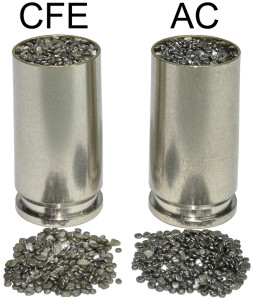
CFE Pistol (CFE) and AutoComp (AC) look very similar and have similar densities. Each 9mm Luger case has an equal weight of gunpowder. These are not charge weights used in this test, and are only used to illustrate the similar density of the two powders.
CFE looks very much like AC, with similar densities and charge weights to achieve similar velocities. However, it is unwise to assume that CFE will work safely for this task without careful testing. I loaded CFE at charge weights that were “off the books” to see how it responded to excess pressure in order to make Major power factor in the .38 Super and 9mm. I compared it directly with AC.
The pressures of these loads almost certainly exceed SAAMI pressure limits for the 38 Super and 9mm and fall into the +P+ category. These types of loads should ONLY be used by handloaders experienced with excess pressure ammunition and ONLY in guns that are designed for this type of use.
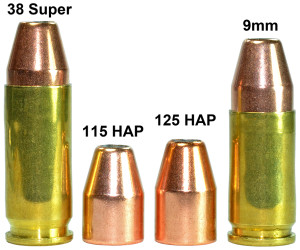 I
loaded 10 rounds for each load with Winchester small rifle primers.
Three different charge weights were used with both powders to check for
linearity over the velocity range tested. Both 115- and 125-grain Hornady Action Pistol bullets
were tested since these are in the weight range that is most commonly
used by competitive shooters in compensated pistols. Winchester brass
was used for the 9mm Luger and Starline
.38 Super Comp brass for the .38 Super. Bullets were seated to 1.240”
cartridge overall length (COL) in the .38 Super and 1.150” in the 9mm.
The lot number of the CFE Pistol powder was 031714-2008 and for the
AutoComp was 1022410-137.
I
loaded 10 rounds for each load with Winchester small rifle primers.
Three different charge weights were used with both powders to check for
linearity over the velocity range tested. Both 115- and 125-grain Hornady Action Pistol bullets
were tested since these are in the weight range that is most commonly
used by competitive shooters in compensated pistols. Winchester brass
was used for the 9mm Luger and Starline
.38 Super Comp brass for the .38 Super. Bullets were seated to 1.240”
cartridge overall length (COL) in the .38 Super and 1.150” in the 9mm.
The lot number of the CFE Pistol powder was 031714-2008 and for the
AutoComp was 1022410-137.
The same gun was used by simply changing barrels. The test barrels were a 5” Kart .38 Super and a 5” Para Ordnance 9mm. Both have fully supported chambers. The gun had a Caspian slide with a standard length firing pin. Velocity was recorded with a Shooting Chrony chronograph at about 10 feet.
Velocity
The velocity profiles are shown in the accompanying plots. Both CFE and
AC produced more-or-less linear velocity changes with the charge
weights tested. CFE produced less velocity than AC for the same charge
weight, an average of 32 feet-per-second (fps) less in the 9mm and 38
fps less in the .38 Super. Velocity standard deviations of CFE and AC
were similar.
Calculations were made with linear regression for the gunpowder charge weights required for power factors 160, 165 and 170 and are shown in the tables. CFE required 0.2 to 0.4 grains more weight than AC for the same power factor. Keep in mind that these weights apply to my 5” barrels. The velocities you achieve in your barrel will depend on it’s length and if it has ports.
One unexpected result was that the charge weights to achieve Major power factor for the .38 Super and 9mm were so similar. In fact, some of the 38 Super loads required less powder than the 9mm for the same power factor. This was unexpected because under normal conditions the .38 Super usually requires a little more powder to achieve the same velocity as the 9mm. The reasoning here is that the 9mm can be viewed as a .38 Super but with the bullet pushed deeper, and the deeper you seat the bullet, the greater the pressure and the greater the velocity. Therefore, all else being equal, the 9mm should require less powder for the same velocity. This reinforces the notion that every barrel is different and needs to be tested independently.
Primers
The primers were examined for pressure signs. Reading primers
is a very poor method for assessing pressure, but it’s one of the few
methods we hand loaders have available when monitoring for excess
pressure. This procedure was used primarily to assess the relative
condition of the CFE primers compared to the AC primers.
Evidence of high pressure in these primers was slight flattening of the corners and cratering around the firing pin strike. The amount and frequency of these signs increased with charge weight.
Primers with the CFE loads appeared to show slightly less evidence of cratering than the same charge weight as the AC. However, the CFE also produced less velocity than AC at the same charge weight. With the .38 Super ammunition, CFE appeared to have slightly less severe pressure signs than the AC at the same power factor. This was not as evident with the 9mm ammunition where the primers looked similar at the same power factor. Certainly, the CFE primers did not look worse than the AC primers at the same power factor.
Keep in mind that this was a small sample of only 10 rounds per load, and for something this imprecise a larger sample would be required for more substantial evidence. Therefore the primer readings should be considered “suggestive” and not conclusive by any means.
Some guns might show excess pressure signs with CFE (or AC) before the desired power factor is reached. In this case slower gunpowder should be used since it is often the case that slower gunpowder will produce the same velocity but at reduced pressure.
Conclusion
Careful testing is always required when selecting any gunpowder for
these types of pressures/velocities in these caliber guns. Hodgdon CFE
Pistol appeared to be suitable for making Major power factor in my 9mm
and .38 Super caliber examples, and others can consider testing it in
their guns.

